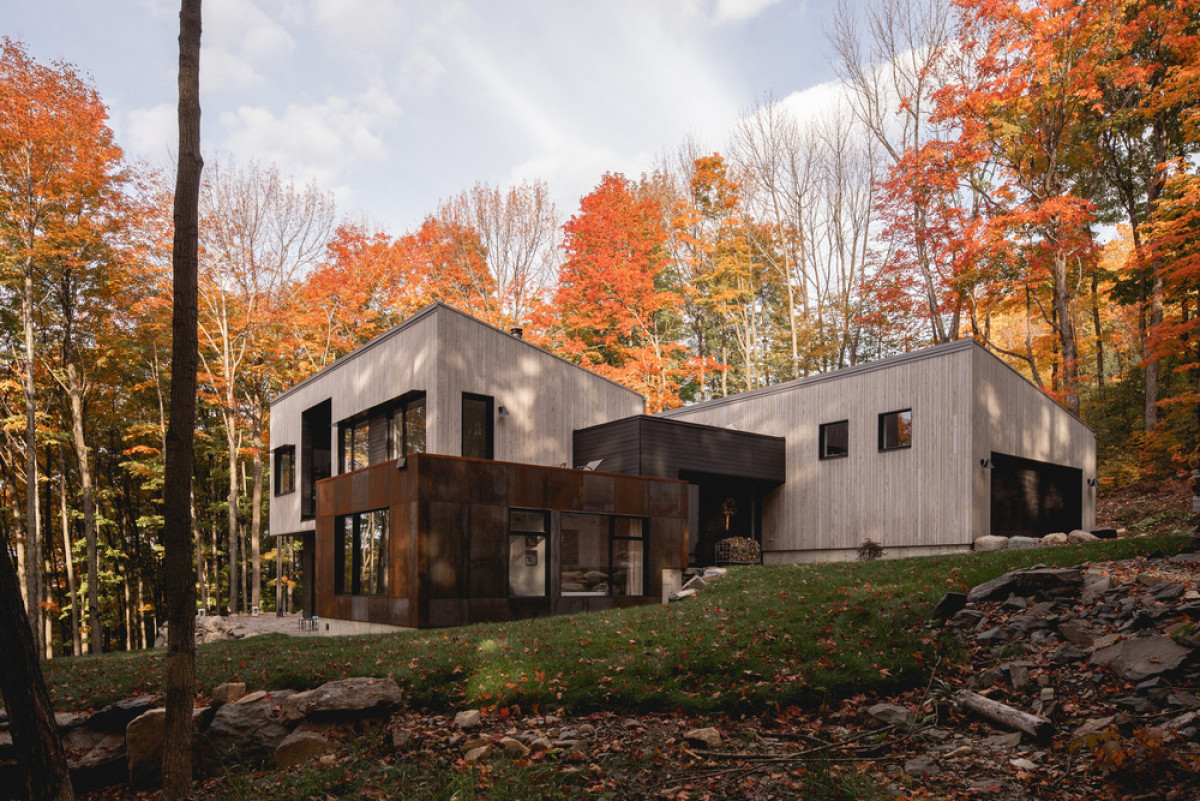04 Nov 2022

Nestled on the south side of Mount Shefford (Québec, Canada), this residence is divided into three main volumes that follow the curves of the land. The volume that is slightly embedded in the mountain, on the rear façade, houses a ceramic workshop and a garage. A smaller volume, clad in Corten steel, is occupied by the master bedroom, its bathroom, and storage spaces. A home theatre room is located below.
Also Read: Festive Home Decor: 10 accessories you should add to your home
The main volume faces due south, with a large opening on two levels that open onto the forest and Mount Bromont in the distance. The roof extends to the west to cover the outdoor terrace. On the east side, a rooftop terrace, accessible from a secondary room, is laid on the Corten block.

The variable width, white cedar siding helps to integrate, and even hide, the house in the forest, while the oxidation of the Corten block picks up the iron rocks present in this part of the mountain. The grey steel roof envelops the entire north façade, protecting the forms of the house from the road above.
Also Read: 7 Simple steps to Declutter your Work Space
This project houses the studio of ceramist Sophie Manessiez, who lives there with her partner Damien and their children. It is a meeting place between domestic, work, and creative spaces.
It is also a place of gathering and greeting family and friends. The openings in these spaces allow singular relationships with the landscape and surrounding nature. Sometimes generous, sometimes more intimate, these multiple openings offer specific views and adapted sunlight so that the workspaces open onto different panoramas from those offered to the family areas. Sunlight, like nature, penetrates the spaces from all sides, positioning the occupants at the centre of an encounter between architecture and nature. The ground floor terrace extends the main space to the exterior.
Also Read | Shiro Kuramata’s Samba-M shines again with Ambientec at the supersalone in Milan
From the first meetings, it was important for the clients to have a house with a human dimension, as well as a reasoned ecological footprint. Particular attention was therefore paid to the orientation of the house to integrate some elements of passive solar design using the thermal mass with the floor slab and the openings to the south while using different methods to create sun breakers on the south facade to avoid overheating in summer. The fenestration also allows for cross-ventilation. The wall insulation was improved with compositions of up to R46 insulation value, as well as roofs of R62 value, thus minimizing the operating costs of the house.
Also Read | Interior stylist Bhawana Bhatnagar on smart lockers at residential spaces
Technical sheet